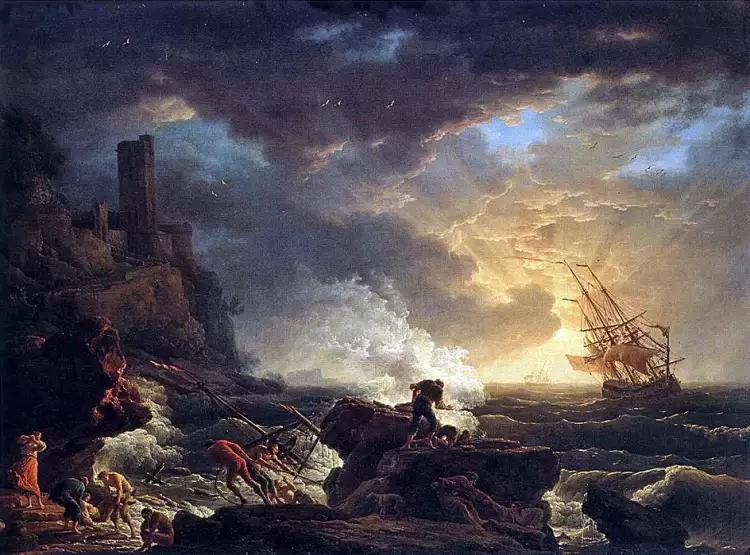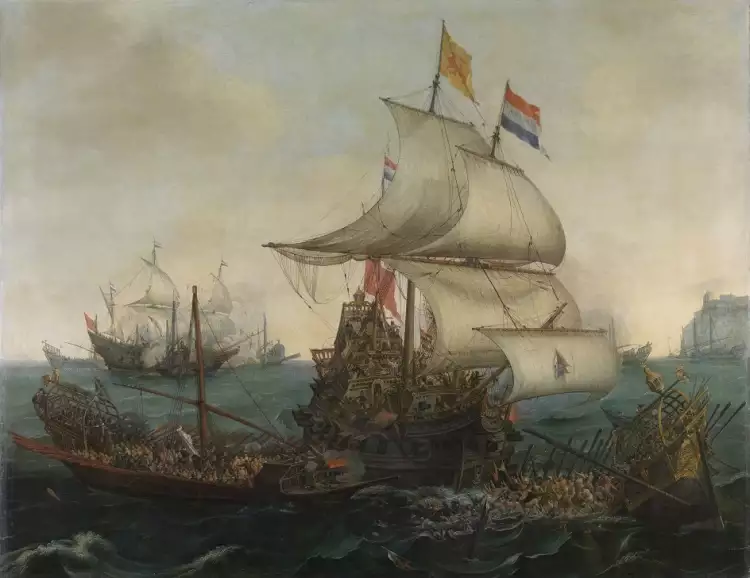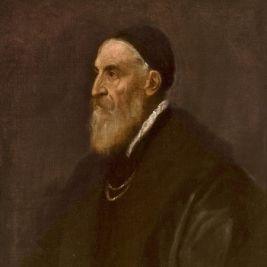
Marine landscape is the most romantic genre of visual art: history, artists, and paintings
Marine landscape, or marina, is a special genre of visual art where the sea is the main element of the painting. The term derives from the Latin word "marinus" and was introduced by the Italians. Marine landscape as an independent genre of painting formed in the Netherlands in the 17th century with the emergence of paintings where the artist's attention was focused on the elements, while ships and people played secondary roles.
 Marine landscape. Ivan Aivazovsky. Frigate at sea, 1838
Marine landscape. Ivan Aivazovsky. Frigate at sea, 1838
Marinism: history, artists, and paintings.
Marine landscapes also inspired artists in antiquity, but in Hellenistic frescoes, nature was merely a backdrop for the unfolding action. In early Christian narratives, maritime themes served a decorative purpose, and the technique was quite primitive. The first example of a classic marine is considered to be Cornelis Anthonisz's painting "Portuguese Fleet," created in 1520.
 Marine landscape. Cornelis Anthonisz. Portuguese navy against a rocky coastline, 1520
Marine landscape. Cornelis Anthonisz. Portuguese navy against a rocky coastline, 1520
Marine landscape became one of the main themes in the work of Dutch artists in the second half of the 16th century. Pieter Bruegel reached great heights in landscape painting. In his realistic works, nature becomes a full participant in the action and adds an emotional dimension to the narrative.
 Marine landscape. Pieter Bruegel the Elder. Naval Battle in the Gulf of Naples, 1558-1562
Marine landscape. Pieter Bruegel the Elder. Naval Battle in the Gulf of Naples, 1558-1562
The genre reached its peak during the Golden Age of Dutch painting. In the 17th century, the Netherlands possessed the most powerful military and trade fleet, so scenes of naval battles were highly popular. The genre's founder, Cornelisz Vroom, dedicated a significant portion of his canvases to naval battles. His style is characterized by meticulous detailing of sailing vessels and virtuoso use of color.
Over time, the fashion for Dutch painting spread across Europe, and maritime themes took a firm place in the works of European artists. The French master Claude Lorrain lived and worked in Italy, where he created exquisite landscapes filled with light and tranquility. In works on ancient and historical themes, he preferred to depict contemporary ships.
 Marine landscape. Claude Lorrain. The Embarkation of the Queen of Sheba, 1648
Marine landscape. Claude Lorrain. The Embarkation of the Queen of Sheba, 1648
A follower and admirer of Claude Lorrain's work was the marine classicist Claude Joseph Vernet. Upon returning to Paris, he painted a series of fifteen pictures titled "Ports of France," which brought him fame. Vernet focused on the atmosphere of light and air, with his subjects becoming marine views, storms, and shipwrecks.
 Marine landscape. Claude Joseph Vernet. Shipwreck, 1759
Marine landscape. Claude Joseph Vernet. Shipwreck, 1759
The naval battles between England and France in the 18th century served as a source of inspiration for marine artists in both countries. Experienced masters of the genre emerged, who aimed to depict naval ships as accurately as possible while taking a rather formal approach to the rest. English master Nicholas Pocock was born into a seafaring family and was a captain of a merchant ship himself. Therefore, during the creation of battle scenes, he thoroughly studied battle plans, the condition, and appearance of ships.
 Marine landscape. Nicholas Pocock. Battle of Copenhagen, early 19th century
Marine landscape. Nicholas Pocock. Battle of Copenhagen, early 19th century
The Sea in the Paintings of 19th Century Artists
Marine landscapes reached their peak of popularity in the early 19th century. The theme proved to be in demand by Romanticism artists. Plots where people confronted the raging elements were ideal for conveying the intensity of emotions and eliciting an emotional response from the viewer.
 Marine landscape. Théodore Géricault. The Raft of the Medusa, 1818-1819
Marine landscape. Théodore Géricault. The Raft of the Medusa, 1818-1819
Renowned British marine artist William Turner became passionate about marine landscapes after his journey to Italy. The painter thoroughly studied the nature of water and air movement, constantly improving his technique, and left behind a series of expressive works that paved the way for the Impressionists.
 Marine landscape. William Turner. The sinking of the Minotaur, 1810
Marine landscape. William Turner. The sinking of the Minotaur, 1810
The sea became the primary subject of the work of Russian romantic artist Ivan Aivazovsky (Russian: Иван Айвазовский) – during his lifetime, he created around six thousand marine paintings. The master almost never worked outdoors, preferring to make schematic sketches from nature, which he then used in his workshop. The artist painted quickly and often completed his work in a single session. He achieved the effect of transparency in the water through glazing, skillfully distributing layers of paint on the canvas.
Ivan Aivazovsky became a mentor to a whole constellation of outstanding Russian painters, including:
- Arkhip Kuindzhi (Russian: Архип Куинджи) (1842-1910).
- Lev Lagorio (Russian: Лев Лагорио) (1826-1905).
- Konstantin Bogayevsky (Russian: Константин Богаевский) (1872-1943).
- Adolf Fessler (Russian: Адольф Фесслер) (1826-1885).
- Alexei Savrasov (Russian: Алексей Саврасов) (1830-1897).
 Marine landscape. Ivan Aivazovsky. The Ninth Wave, 1850
Marine landscape. Ivan Aivazovsky. The Ninth Wave, 1850
The innovative painting techniques of the Impressionists took marine art to a new level. Clear and vibrant colors, separate brushstrokes, and the abandonment of glazing allowed them to capture the ever-changing nature of the watery element on canvas. The beginning of Impressionism was marked by Claude Monet when he displayed his works with views of the port of Le Havre at the Paris exhibition. Coastlines, harbors, and beaches became favorite subjects of the painter, and his masterpieces astonish with the freshness of color and the expertly conveyed sense of the air's vibration over the water.
 Marine landscape. Claude Monet. Mouth of the Seine at Honfleur, 1865
Marine landscape. Claude Monet. Mouth of the Seine at Honfleur, 1865
Contemporary marine artists draw inspiration from the works of the old masters and continue to create outstanding works of art. In the catalogs of online auction sites like Very Important Lot, you can find many interesting paintings that can be purchased directly from the artists.

 KPM Berlin: Production of exquisite porcelain with a 250-year history
KPM Berlin: Production of exquisite porcelain with a 250-year history  The painting "La Promenade" by Pierre-Auguste Renoir is an example of fleeting happiness
The painting "La Promenade" by Pierre-Auguste Renoir is an example of fleeting happiness  Mythological genre is the captivating world of ancient myths and legends
Mythological genre is the captivating world of ancient myths and legends  Academism is an authoritative, virtuoso, and conservative style
Academism is an authoritative, virtuoso, and conservative style  Titian Vecellio was the greatest Venetian genius of the Renaissance era
Titian Vecellio was the greatest Venetian genius of the Renaissance era  Alberto Giacometti was a great sculptor of the 20th century who relentlessly shattered the stereotypes of art in search of creative self-expression
Alberto Giacometti was a great sculptor of the 20th century who relentlessly shattered the stereotypes of art in search of creative self-expression  English Silver Tableware - History, Fashion, and Styles
English Silver Tableware - History, Fashion, and Styles  Innovative Skyscrapers Reshaping Urban Skylines
Innovative Skyscrapers Reshaping Urban Skylines  Gothic - the mystical art of the Middle Ages
Gothic - the mystical art of the Middle Ages  László Moholy-Nagy was a brilliant artist, a great experimenter, and an outstanding art theorist
László Moholy-Nagy was a brilliant artist, a great experimenter, and an outstanding art theorist